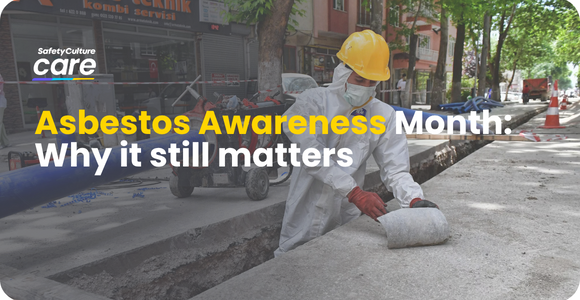November is National Asbestos Awareness Month, a time for communities and businesses to shine a light on the risks of asbestos exposure. The harm to health is well known, but identifying the material isn’t always as straightforward.
Even though asbestos was banned more than 20 years ago, it remains one of the most common hidden hazards in Australian buildings. With one in three homes built before 1990 likely to contain it, understanding how to identify and manage asbestos safely is key to protecting workers, clients, and communities.
Risk engineers have answered some of the most common questions to help you know what to look for.
From the risk engineers
Wasn’t asbestos banned? Why is it still an issue?
Although asbestos is banned in Australia, it’s still a risk in older buildings and infrastructure. Many asbestos-containing materials (ACMs) were left sealed during the phase-out, which can become hazardous during renovations, demolitions, or natural disasters.
Why is it critical to know exposure when writing a new business?
Having asbestos in a building significantly increases the cost of clean-up should there be a large loss event.
| Walls | Often found in “fibro” wall material that’s quite easy to spot, although harder to identify if painted or rendered. |
| Inside buildings | • Wall sheeting (often fibro or cement sheet) • Ceiling panels and internal partitions • Lagging around hot water pipes and ducts |
| External Structures | • Roofing, eaves, and gutters • Downpipes and fences •Electrical switchboard backings |
| Other common areas | • Guttering • Downpipes • Lagging or insulation around water pipes • Backboards of electrical switchboards • Eaves or roofing • Ceiling materials • Internal partitions of offices and toilets |
My business has asbestos. Why do I need an asbestos management plan?
WHS/OHS laws in each state and territory require businesses in buildings with asbestos or a risk of exposure to have an asbestos management plan. This must be registered regardless if they’re tenants or owners.
We recommend engaging an Occupational Hygienist to help you prepare and maintain a comprehensive asbestos management plan that includes:
- Where to find the asbestos register
- Signage and labeling of asbestos areas
- Safe work procedures and control measures
- Incident and emergency procedures
- Asbestos consultation, training, and work log.
Why a management plan matters
Beyond legal requirements, a proactive management plan protects workers and reduces liability. It also builds trust with clients by showing a commitment to safety and due diligence.
To learn more about tailoring property coverage for your business, contact Lewis Insurance Services on 07 3217 9015 or send us an email by clicking here.
This article was published by our AFSL Licensee, Insurance Advisernet Australia P/L, www.insuranceadviser.net
Disclaimer:
This information and any accompanying material does not consider your personal circumstances as it is of a general nature only. You should not act on the information provided without first obtaining professional financial advice specific to your circumstances and considering the Product Disclosure Statement

